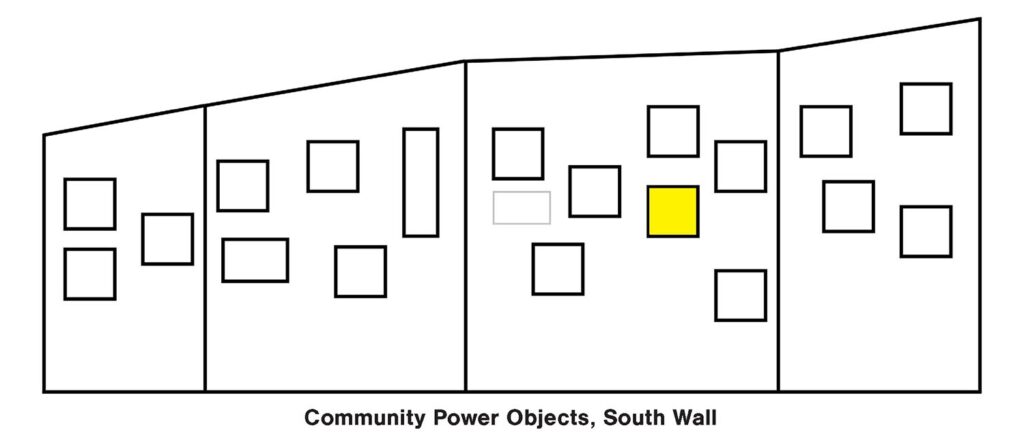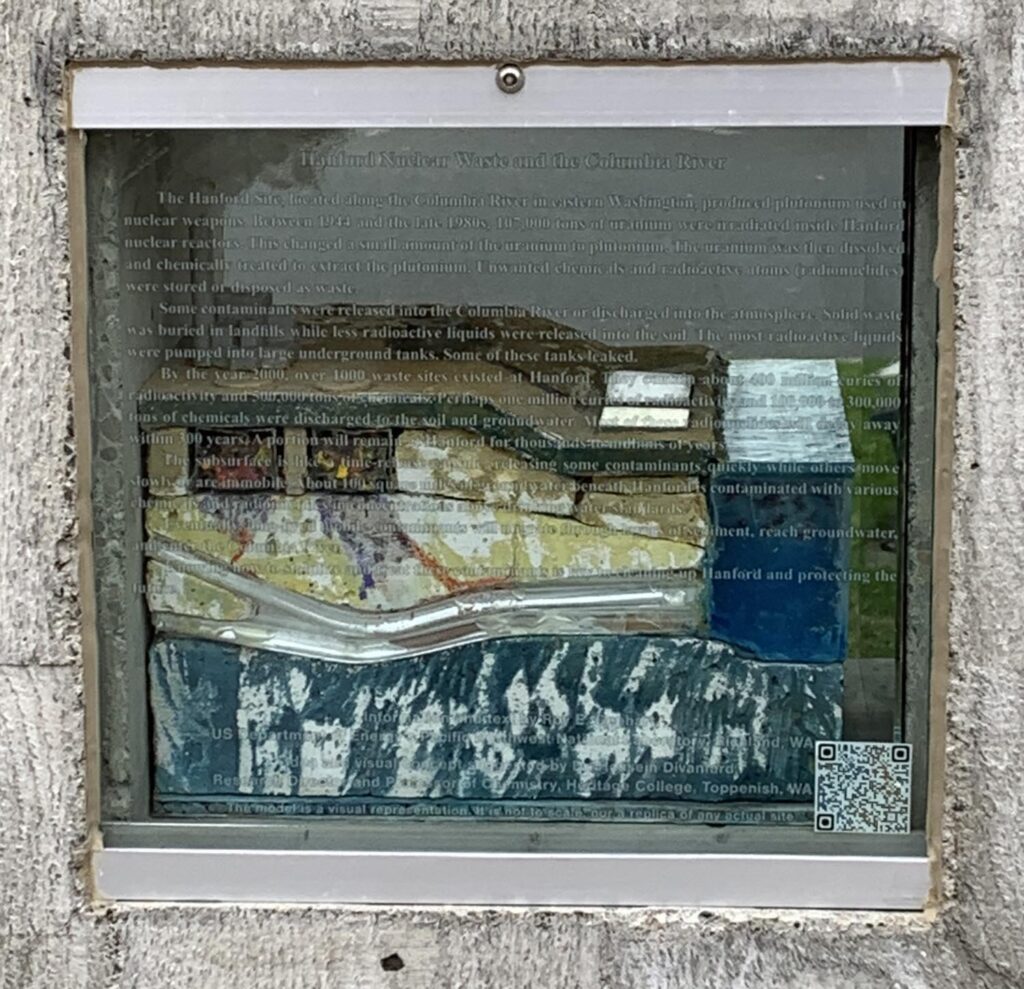Hanford Reactor – Millennium Plaza
The Hanford Site, located along the Columbia River in eastern Washington, produced plutonium used in nuclear weapons. Between 1944 and the late 1980s, 107,000 tons of uranium were irradiated inside Hanford nuclear reactors. This changed a small amount of the uranium to plutonium. The uranium was then dissolved and chemically treated to extract the plutonium. Unwanted chemicals and radioactive atoms (radionuclides) were stored or disposed as waste.
Some contaminants were released into the Columbia River or discharged into the atmosphere. Solid waste was buried in landfills while less radioactive liquids were released into the soil. The most radioactive liquids were pumped into large underground tanks. Some of these tanks leaked.
By the year 2000, over 1000 waste sites existed at Hanford. They contain about 400 million curies of radioactivity and 500,000 tons of chemicals. Perhaps one million curies of radioactivity and 100,000 to 300,000 tons of chemicals were discharged to the soil and groundwater. Most of these radionuclides will decay away within 300 years. A portion will remain at Hanford for thousands to millions of years.
The subsurface is like a time-release capsule, releasing some contaminants quickly while others move slowly or are immobile. About 100 square miles of groundwater beneath Hanford is contaminated with various chemicals and radionuclides in concentrations above drinking water standards.
Eventually, long-lived mobile contaminants will migrate through layers of sediment, reach groundwater, and enter the Columbia River.
Knowing how to stabilize and treat these contaminants is key to cleaning up Hanford and protecting the future.
Information and text by Roy E. Gephart, US Department of Energy’s Pacific Northwest National Laboratory, Richland, WA
Idea and visual concept suggested by Dr. Hossein Divanfard, Research Director and Professor of Chemistry, Heritage College, Toppenish, WA
The model, made by Wen-ti Tsen, is a visual representation. It is not to scale, nor a replica of any actual site.


